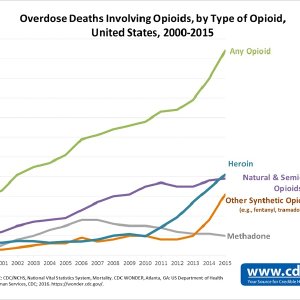Generic Drugs Pose New Threat In Addiction Fight

The battle against addiction continues as old enemies threaten to return to the ring. Patents for Oxycontin and Opana ER expire this year, allowing generic drugs back on the market. These substances are not tamper-proof like their brand-name formulas, so officials predict heightened pharmaceutical abuse as addicts and drug dealers catch on.
Oxycontin
Oxycontin is the brand name for oxycodone, a powerful opioid painkiller used to treat moderate to severe pain, as in the case of serious injuries or cancer patients. Its original formula produced white tablets that could be easily ground into powder to be snorted, smoked, or dissolved in water to be injected. This bypassed the time-release formula and gave the user a rush of euphoria almost immediately.
When Oxy abuse ran rampant, Purdue Pharma (the drug’s patent holder) recalled all original formulas and created a new, tamper-proof pill that could not be crushed and turned to gel if put in contact with water. It was at this point that illicit sales dropped significantly and addicts lost interest in Oxycontin. The high was not the same with simple ingestion.
With the expiry of the Oxycontin patent, however, generic oxycodone will return to pharmacies, generating newfound interest among the illicit drug users’ community.
Opana ER
Opana ER is the brand name for oxymorphone, an opiate pain reliever that is similar to morphine. It, too, is used to treat moderate to severe pain, and it comes in a time-release formula that provides 24/7 pain management. Users say that it is similar to Oxycontin but twice as strong.
Opana manufacturers also created a tamper-resistant pill, but not until much later than Oxycontin. As a result, Opana was at one point more popular than Oxycontin because it could still be crushed to achieve a fast high.
Oxycontin and Opana addicts turned to heroin after the painkillers changed form. Heroin is another opioid that users say the produces the same high. With new restrictions on prescription opioids, it can also be easier to obtain and must cheaper.
The Scope Of Prescription Drug Abuse
Prescription drug abuse is a growing problem in the United States, with people from all walks of life and all ages getting hooked. It is sold on the street and in schools; it is pilfered by nurses and doctors to feed their own addictions; it is common among the elderly, and it becomes big business for rogue doctors and pharmacists who get paid under the table for dishing out prescriptions. Prescription opioids are extremely addictive, and even the least likely people can become dependent after just a few uses.
Watch for signs of opioid dependence and get help immediately if you find yourself experiencing any one of these symptoms:
- You experience withdrawal when you stop taking the drug. Withdrawal symptoms mirror that of actual illness, including respiratory infection, nausea, vomiting, fever, and chills. Only when you use the drug again do you feel relief.
- You begin to crave the drug or find yourself thinking about it when you aren’t taking it.
- You start finding unusual ways to get more prescriptions, including doctor shopping, complaining of pain that is not there or is not as bad as you say, and searching through the medicine cabinets of friends and family.
- You take more than the prescribed amount or start to mix the drugs with other drugs or alcohol.
If you notice these or other signs of addiction get immediate help. Contact us more information on prescription drug abuse or to learn more about how Narconon can help.
Sources:

 ®
®